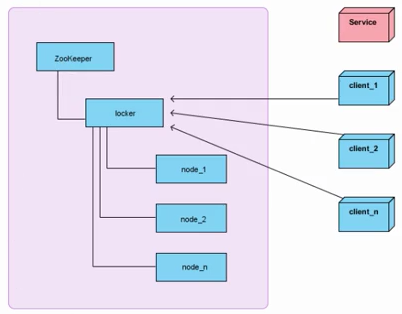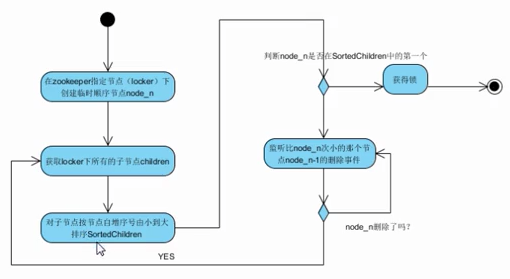1
2
3
4
5
6
7
8
9
10
11
12
13
14
15
16
17
18
19
20
21
22
23
24
25
26
27
28
29
30
31
32
33
34
35
36
37
38
39
40
41
42
43
44
45
46
47
48
49
50
51
52
53
54
55
56
57
58
59
60
61
62
63
64
65
66
67
68
69
70
71
72
73
74
75
76
77
78
79
80
81
82
83
84
85
86
87
88
89
90
91
92
93
94
95
96
97
98
99
100
101
102
103
104
105
106
107
108
109
110
111
112
113
114
115
116
117
118
119
120
121
122
123
124
125
126
127
128
129
130
131
132
133
134
135
136
137
138
139
140
141
142
143
144
145
146
147
148
149
150
151
152
153
154
155
156
157
158
159
160
161
162
163
164
165
166
167
168
169
170
171
172
173
174
175
176
177
178
179
180
181
182
183
184
185
186
187
188
189
190
191
192
193
194
195
196
197
198
199
200
201
202
203
204
205
206
207
208
209
210
211
212
213
214
215
216
217
218
219
220
221
222
223
224
225
226
227
228
229
230
231
232
233
234
235
236
237
238
239
240
241
242
243
244
245
246
247
248
249
250
251
252
253
254
255
256
257
258
259
260
261
262
263
264
265
266
267
268
269
270
271
272
273
274
275
276
277
278
279
280
281
282
283
284
285
286
287
288
289
290
291
292
293
294
295
296
297
298
299
300
301
302
303
304
305
306
307
308
309
310
311
| public interface DistributedLock {
public void acquire() throws Exception;
public boolean acquire(long time, TimeUnit unit) throws Exception;
public void release() throws Exception;
}
public class SimpleDistributedLockMutex extends BaseDistributedLock implements
DistributedLock {
private static final String LOCK_NAME = "lock-";
private final String basePath;
private String ourLockPath;
private boolean internalLock(long time, TimeUnit unit) throws Exception {
ourLockPath = attemptLock(time, unit);
return ourLockPath != null;
}
public SimpleDistributedLockMutex(ZkClientExt client, String basePath){
super(client,basePath,LOCK_NAME);
this.basePath = basePath;
}
public void acquire() throws Exception {
if ( !internalLock(-1, null) ) {
throw new IOException("连接丢失!在路径:'"+basePath+"'下不能获取锁!");
}
}
public boolean acquire(long time, TimeUnit unit) throws Exception {
return internalLock(time, unit);
}
public void release() throws Exception {
releaseLock(ourLockPath);
}
}
public class BaseDistributedLock {
private final ZkClientExt client;
private final String path;
private final String basePath;
private final String lockName;
private static final Integer MAX_RETRY_COUNT = 10;
public BaseDistributedLock(ZkClientExt client, String path, String lockName){
this.client = client;
this.basePath = path;
this.path = path.concat("/").concat(lockName);
this.lockName = lockName;
}
private void deleteOurPath(String ourPath) throws Exception{
client.delete(ourPath);
}
private String createLockNode(ZkClient client, String path) throws Exception{
return client.createEphemeralSequential(path, null);
}
private boolean waitToLock(long startMillis, Long millisToWait, String ourPath) throws Exception{
boolean haveTheLock = false;
boolean doDelete = false;
try {
while ( !haveTheLock ) {
List<String> children = getSortedChildren();
String sequenceNodeName = ourPath.substring(basePath.length()+1);
int ourIndex = children.indexOf(sequenceNodeName);
if (ourIndex < 0){
throw new ZkNoNodeException("节点没有找到: " + sequenceNodeName);
}
boolean isGetTheLock = ourIndex == 0;
String pathToWatch = isGetTheLock ? null : children.get(ourIndex - 1);
if ( isGetTheLock ){
haveTheLock = true;
} else {
String previousSequencePath = basePath .concat( "/" ) .concat( pathToWatch );
final CountDownLatch latch = new CountDownLatch(1);
final IZkDataListener previousListener = new IZkDataListener() {
public void handleDataDeleted(String dataPath) throws Exception {
latch.countDown();
}
public void handleDataChange(String dataPath, Object data) throws Exception {
}
};
try {
client.subscribeDataChanges(previousSequencePath, previousListener);
if ( millisToWait != null ) {
millisToWait -= (System.currentTimeMillis() - startMillis);
startMillis = System.currentTimeMillis();
if ( millisToWait <= 0 ) {
doDelete = true;
break;
}
latch.await(millisToWait, TimeUnit.MICROSECONDS);
} else {
latch.await();
}
}
catch ( ZkNoNodeException e ) {
} finally {
client.unsubscribeDataChanges(previousSequencePath, previousListener);
}
}
}
}
catch ( Exception e ) {
doDelete = true;
throw e;
} finally {
if ( doDelete ) {
deleteOurPath(ourPath);
}
}
return haveTheLock;
}
private String getLockNodeNumber(String str, String lockName) {
int index = str.lastIndexOf(lockName);
if ( index >= 0 ) {
index += lockName.length();
return index <= str.length() ? str.substring(index) : "";
}
return str;
}
List<String> getSortedChildren() throws Exception {
try{
List<String> children = client.getChildren(basePath);
Collections.sort(
children, new Comparator<String>() {
public int compare(String lhs, String rhs) {
return getLockNodeNumber(lhs, lockName).compareTo(getLockNodeNumber(rhs, lockName));
}
}
);
return children;
} catch (ZkNoNodeException e){
client.createPersistent(basePath, true);
return getSortedChildren();
}
}
protected void releaseLock(String lockPath) throws Exception{
deleteOurPath(lockPath);
}
protected String attemptLock(long time, TimeUnit unit) throws Exception {
final long startMillis = System.currentTimeMillis();
final Long millisToWait = (unit != null) ? unit.toMillis(time) : null;
String ourPath = null;
boolean hasTheLock = false;
boolean isDone = false;
int retryCount = 0;
while ( !isDone ) {
isDone = true;
try {
ourPath = createLockNode(client, path);
hasTheLock = waitToLock(startMillis, millisToWait, ourPath);
} catch ( ZkNoNodeException e ) {
if ( retryCount++ < MAX_RETRY_COUNT ) {
isDone = false;
} else {
throw e;
}
}
}
if ( hasTheLock ) {
return ourPath;
}
return null;
}
}
public class TestDistributedLock {
public static void main(String[] args) {
final ZkClientExt zkClientExt1 = new ZkClientExt("192.168.1.105:2181", 5000, 5000, new BytesPushThroughSerializer());
final SimpleDistributedLockMutex mutex1 = new SimpleDistributedLockMutex(zkClientExt1, "/Mutex");
final ZkClientExt zkClientExt2 = new ZkClientExt("192.168.1.105:2181", 5000, 5000, new BytesPushThroughSerializer());
final SimpleDistributedLockMutex mutex2 = new SimpleDistributedLockMutex(zkClientExt2, "/Mutex");
try {
mutex1.acquire();
System.out.println("Client1 locked");
Thread client2Thd = new Thread(new Runnable() {
public void run() {
try {
mutex2.acquire();
System.out.println("Client2 locked");
mutex2.release();
System.out.println("Client2 released lock");
} catch (Exception e) {
e.printStackTrace();
}
}
});
client2Thd.start();
Thread.sleep(5000);
mutex1.release();
System.out.println("Client1 released lock");
client2Thd.join();
} catch (Exception e) {
e.printStackTrace();
}
}
}
public class ZkClientExt extends ZkClient {
public ZkClientExt(String zkServers, int sessionTimeout, int connectionTimeout, ZkSerializer zkSerializer) {
super(zkServers, sessionTimeout, connectionTimeout, zkSerializer);
}
@Override
public void watchForData(final String path) {
retryUntilConnected(new Callable<Object>() {
public Object call() throws Exception {
Stat stat = new Stat();
_connection.readData(path, stat, true);
return null;
}
});
}
}
|

